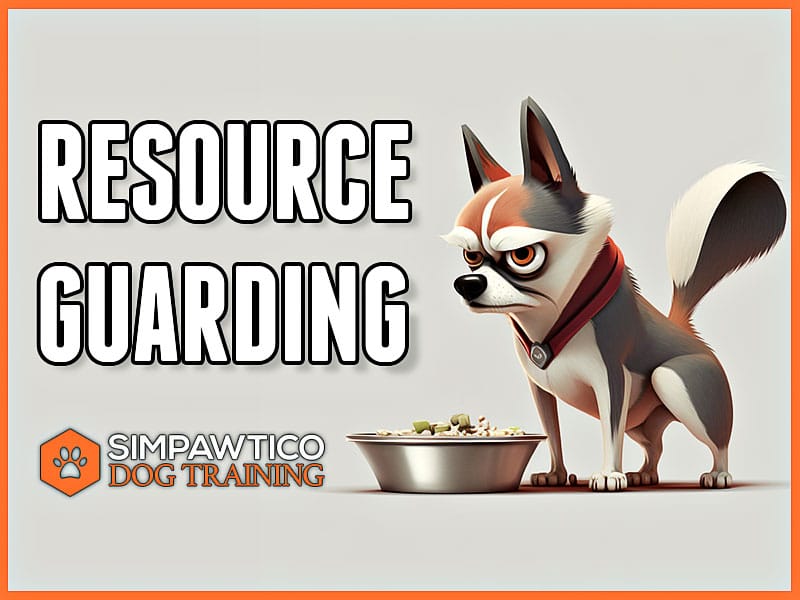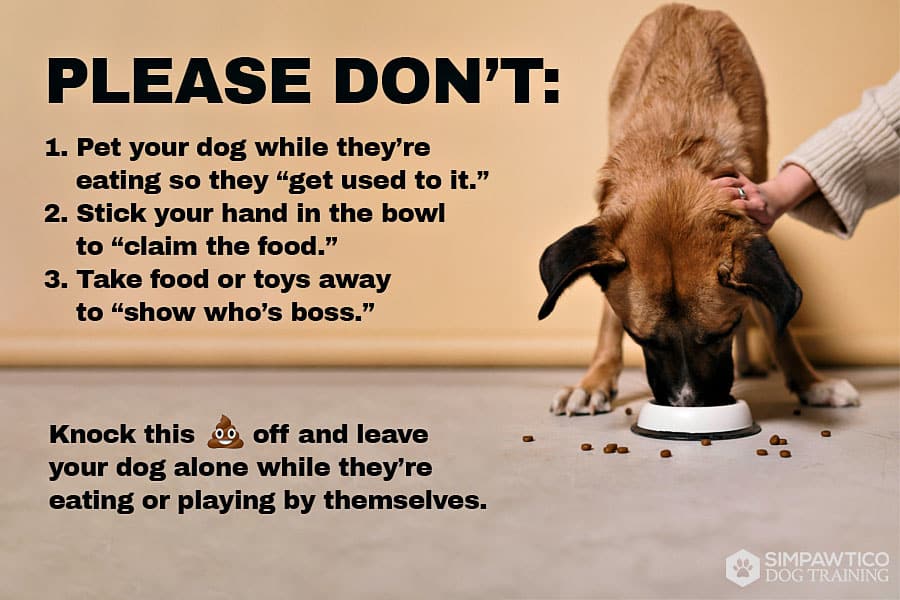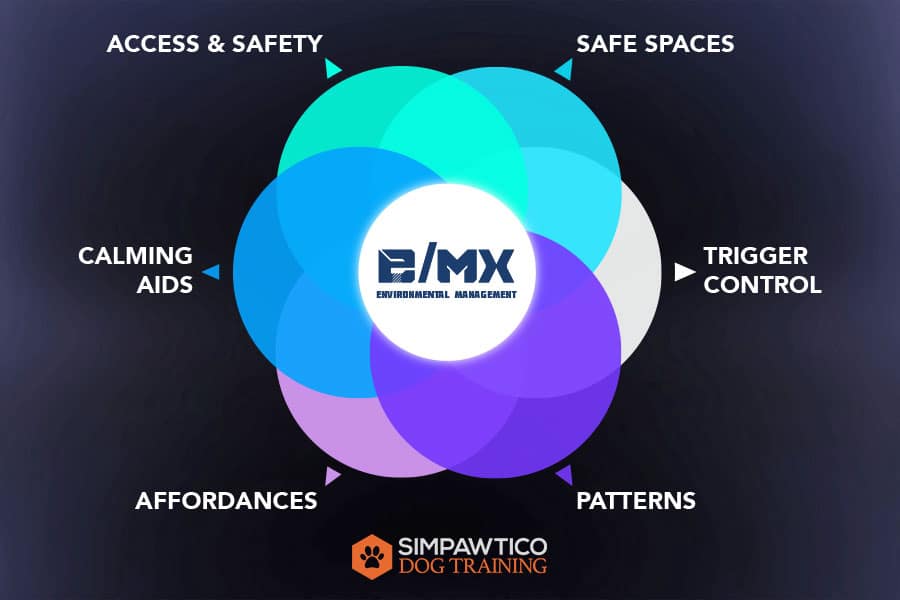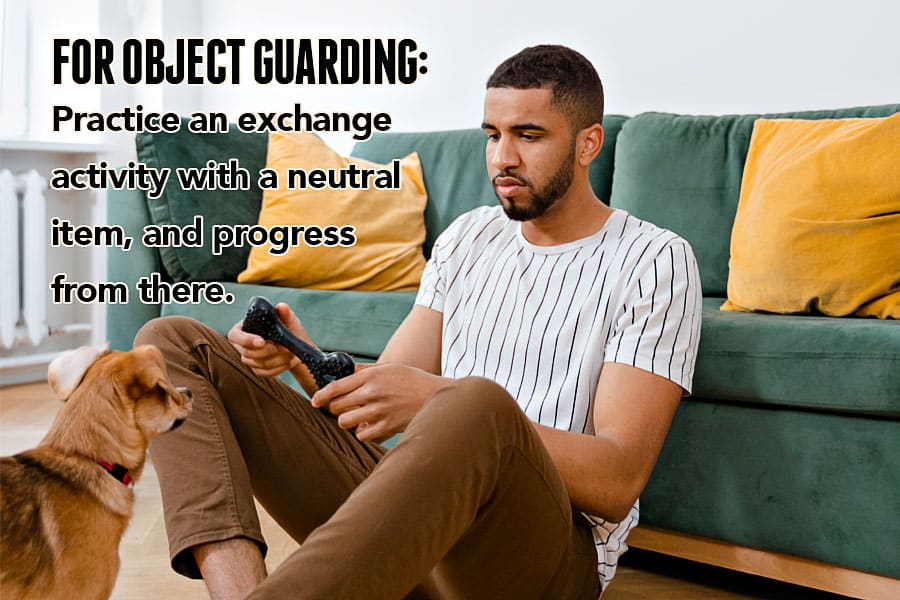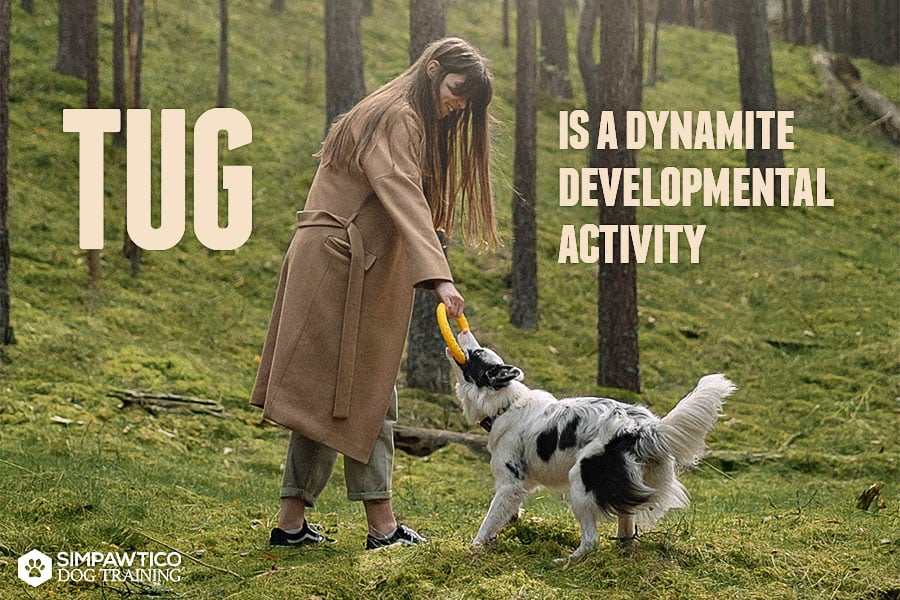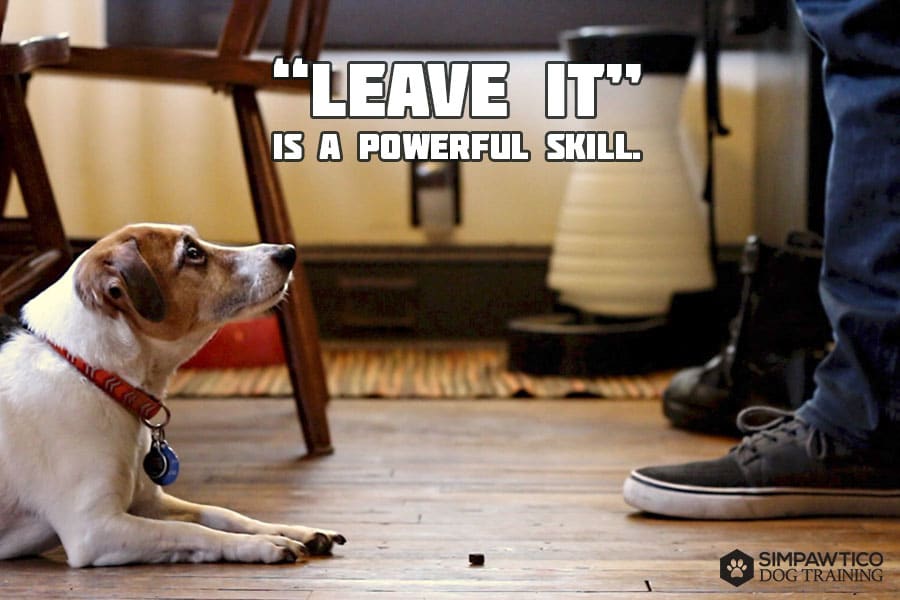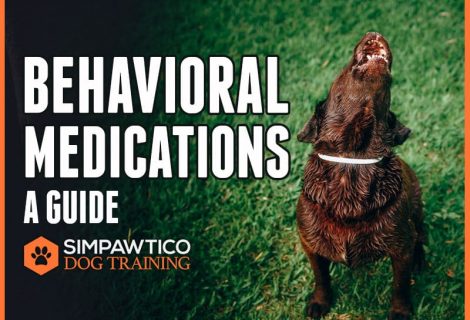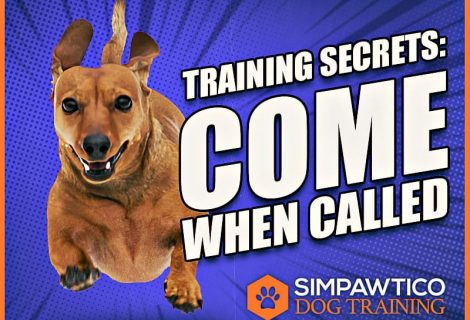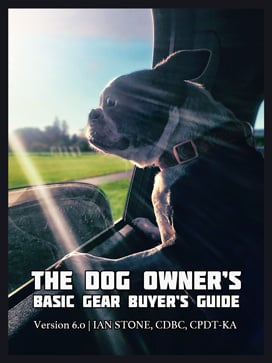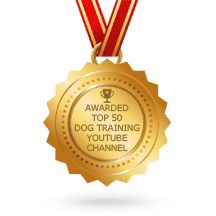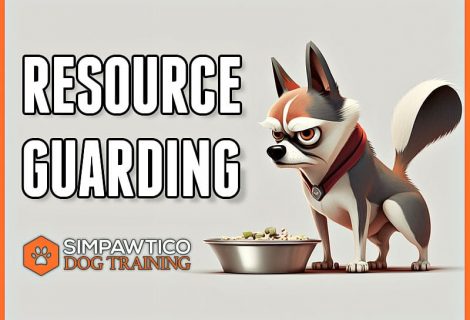Understanding Resource Guarding in Dogs: A Guide for Pet Owners
This post contains affiliate links. These won’t cost you anything, but the commissions we may earn through them help offset the cost of treats. Thanks for your support!
Also, grab the free PDF of this article: Resource Guarding
What is Resource Guarding In Dogs?
“Resource guarding” refers to aggressive behaviors a dog displays to keep control of something valuable. It could be a toy or food, but also things like their favorite resting place, an area close to their owner, or a doorway.
Resource guarding in dogs is a normal dog behavior that can be traced back to their ancestors. Wild canids like wolves had to compete for resrouces to survive, so it makes sense that dogs instinctively want to protect and keep their resources (such as food, toys, or space) to themselves to ensure their perception of survival. However, resource guarding can become problematic for pet dogs living in a domestic setting, so it’s important for owners to learn how to manage and adjust this behavior.
Common resources for a dog can be:
- Food
- Water
- Toys
- Space
- People (even you)
- Locations
Resource guarding behaviors in dogs vary depending on the context, as they may protect against humans and other dogs in differing ways. For example, your dog might growl if another dog tries to snatch their chew toy, while they wouldn’t mind if you or anyone else came near them. Or the opposite might be true. Understanding these nuances in behavior is essential for responsible dog ownership.
Likewise, dogs tend to guard specific resources predictably. But when they learn it works, they may also resource guard other things. Therefore, owners need to work to stop resource guarding as early as possible.
Guarding is generally more about insecurity than anything else.
TOP THREE WAYS TO CREATE GUARDING BEHAVIOR:
- Pet your dog while eating so they “get used to it.”
- Stick your hand in your dog’s bowl to “claim the food.”
- Take food or toys away to “show who’s boss.”
Don’t do this boneheaded stuff. Leave your dog alone while they’re eating or playing with a toy.
INTENSITY BEFORE FREQUENCY
Any annoying behavior you work on with your dog will follow a similar track: intensity changes before frequency does. This means that while incidents may still happen at a similar rate, you should see a decrease in the intensity of the behaviors and a quicker recovery from your dog. Don’t get discouraged if there are still aggressive episodes; take a critical look and evaluate carefully to see if progress is being made.
FIRST STEP: ENVIRONMENTAL MANAGEMENT
Any behavior that gets practiced is likely to become a habit. This means that you should set up the environment so that guarding behavior does not occur. How you go about this depends on what the dog is protecting and your specific situation.
- This might mean NOT giving your dog high-value items (like pig ears, rawhides, etc.).
- It might mean your dog is fed in another room so they are not disturbed, or not letting them on the couch if they guard it, etc. A “safe space” for your dog may be helpful.
- Pick up things your dog shouldn’t have, like tissues and remote controls.
- It might mean they’re not allowed on the furniture anymore.
- They may not have access to a certain area; block these off with a baby gate or closed door.
- Make sure family members are all on the same page.
If you find that they’re already in possession of an item they normally guard or are in a place they guard, JUST LET THEM HAVE IT! Avoid initiating a confrontation or attempting to “assert dominance;” doing so will only aggravate the situation.
The above are introductory suggestions. If you’re struggling with some big behaviors, you can get deep into Environmental Management with our video and post on it.
DO NOT “CORRECT” RESOURCE GUARDING BEHAVIOR
It is not advisable to reprimand or punish your dog for exhibiting guarding behavior, as this can aggravate their stress levels. Instead of preventing guarding behavior, this approach might encourage your dog to suppress or hide their guarding tendencies. This is how you get a dog that bites without warning. You’re teaching your dog they’re right to get anxious about it because a confrontation is imminent; it’s like trying to put out a fire with kerosene.
Also, do not set the dog up to fail by provoking a guarding response so you can “correct” your dog. This entrapment will only increase their stress, dilute their feeling of safety in the environment, and make their reaction worse next time.
FOR OBJECT GUARDING
The best approach here is to set up an exchange program. Teach your dog that hands come in to give, not to take.
- Present your dog with a neutral object they do not guard—start with a low-value toy or some neutral object from around the house. Let them sniff it and know that it’s there.
- Then, take it away, and give them three tasty treats, one after the other (not all at once).
- Give effusive praise.
Your dog will think this is the strangest thing you’ve yet done. But you’re establishing a reliable exchange program and teaching them the mechanics with an item they’re not invested in. This makes it easy for them to learn the pattern. It’s a practice run for the main event.
IMPORTANT: do not bribe. The item is taken, and then the treats appear, not the other way around. Do not waggle the treats to distract them while you reach in. That defeats the whole purpose of establishing an expectation. Distraction training will always fail in the long term.
Next Steps
When this is completely rote and taken for granted, begin practicing the same exchange program with increasingly more valuable things. Do it the same always:
- Present the item,
- allow your dog to sniff it,
- take it away,
- then praise and feed.
- Repeat several times per session.
Follow each session with play, if possible. A good game of tug or fetch further conditions your dog that the exchange program is a winning proposition.
When you get to the item(s) that your dog is the most possessive of—such as their favorite toy— you should have already practiced dozens, if not hundreds of times. Your dog should not react in any particular way when you take those items and should expect a positive outcome.
Suppose the item your dog guards the most is something they routinely grab—such as some “contraband” like a tissue or a remote—then practice with that particular item in your advanced setups. Please don’t wait until an actual incident to try it out. Rehearsals are the key to success!
Also: keep that stuff picked up!
POSSESSIVE AGGRESSION SOLUTIONS
Drop It
Improve your dog’s control over their mouth by practicing the “Drop it” command using items your dog doesn’t guard. You can do this by playing interactive games like Tug.
“Drop It” is not lured or taught with pressure; we simply make it boring and non-rewarding.
- Immobilize the tug toy, say “Drop It,” and W-A-I-T. Don’t pull on it, move it around, nag, or reprimand. Wait it out.
- When they let go, mark it and reactivate the game with energy. Your dog will realize that letting go turns the game back on.
With a bit of practice, “Drop It” will become instantaneous. See our “Tug Toy Tips” PDF on the downloads page for more info.
The benefit is that the dog learns that giving things up to you is good. Do not chase or corner your dog if they have something (if you can avoid it), as this is more likely to provoke a guarding response.
Leave It
Another super helpful behavior to teach mouth control is Leave It. Leave It helps manage when your dog wants something they shouldn’t have. But, like Drop It, it also develops their impulse control. Good impulse control is a powerful character trait for a dog to have.
To improve the effectiveness of “Leave It,” go beyond using food as a decoy and incorporate non-food items. Focusing only on food will limit its usefulness. Practice with various items to make “Leave It” applicable in any situation. Luckily, getting that good doesn’t take much—you just have to do the reps!
Please note: “Drop it” and “Leave it” are not interchangeable. “Leave it” is for something your dog wants that you don’t want them to have. If they have possession of it, that’s “Drop it.”
We have a video and article about teaching Leave It if you’d like detailed instruction!
FOOD BOWL GUARDING
You can set similar, positive expectations for your dog’s food bowl. Show dogs that guard food that hands come in to give, not to take.
- Go through the steps of preparing your dog’s food like usual, except set down an empty bowl.
- When your dog looks at you like, “What gives?” Take a small handful of food, reach down, and drop it in the bowl.
- When that’s gone, put some more in it, and so on, until the meal is finished.
Now you’ve begun changing the landscape of having you near their food bowl.
On a side note, if your dog is showing food aggression and you’re free-feeding your dog, change immediately to timed, routine feeding. From a behavioral standpoint, free-feeding (always leaving a bowl down) contributes to the problem! You need to retain better control of the food and make it an interactive event. Simpawtico has a free PDF about the behavioral value of routine, timed feeding on our downloads page.
COUNTERCONDITIONING FOR RESOURCE GUARDING BEHAVIOR
For guarding behaviors involving space, you can train your dog to associate a positive response with your approach. To do this:
- Approach your dog while they’re in their preferred space.
- Before they get anxious, toss them a delicious treat and walk away (retreating is important).
- Count to 10.
- Repat steps 1-3.
- Lather, rinse, repeat.
Make sure to move away after each time you toss the food. This movement pattern helps train your dog to associate your approach with positive things and also helps to discharge stress. It also allows you to break down each treat-and-retreat into a complete repetition. Practicing this pattern repeatedly is how you improve, just like going to the gym.
You will gradually be able to get closer and closer to your dog while they have something of value. Put in the reps, and you’ll see a reduction in the intensity!
PRO TIP: this template also works with object guarding and people guarding!
Pay Attention to Your Dog’s Reaction Zone
In technical terms, we’re always paying close attention to threshold. The critical part of this exercise is that you reward them BEFORE you see signs of guarding. Look very closely at your dog’s body language. Often the first sign of guarding is that your dog eats faster (or tries to swallow the item) or that they freeze over the item. You’ll often see crescent moons or whale eye, too. In most dogs, there are usually very subtle signals before more obvious signs like growling.
So, If the early sign of guarding occurs when you are 10 feet away, you need to toss the treat from 12 feet away. Be mindful of the distance and take necessary measures to prevent any guarding behavior from happening.
DOG-TO-DOG
The training setup is essentially the same when the trigger is another dog. We put the other dog on a leash to control range, then introduce your dog at whatever range they’re comfortable with (again, keeping them under threshold). At that point, we start both classical and operant counterconditioning. Over several sessions, we decrease the distance between the two and add various movement dynamics.
There are a lot of moving parts here. The basic template is outlined in Simpawtico’s “Snapback Routine,” a free PDF of which is available on our downloads page. In any event, have a certified professional dog trainer help you!
RESOURCE GUARDING PEOPLE
The above strategies can all be modified to some extent to help with guarding humans. In many cases, some progressive desensitization will reduce the problem well enough. However, depending on the breed—guardian and toy breeds especially—the problem may require professional help.
REDUCE NERVOUSNESS WITH ENRICHMENT
Providing a dog with different physical and mental stimulation types can result in fewer behavioral problems. Some things to consider:
- Interactive play times like tug, fetch, flirt pole, or hide ‘n’ seek. Simply putting your dog outside on a tie-out is grossly insufficient.
- Work-to-eat projects.
- Sniff-n-stroll excursions like Simpawtico’s “Toy Store Hack.”
- Mental games like scent detection or shed hunting.
- Sports like rally, agility, or Triebball.
- Fun and dynamic obedience play-training.
- Available chew toys for quiet downtime (provided these don’t trigger guarding).
Your dog’s breed, age, and unique history will determine the kinds of things they’re interested in doing. Spend time figuring out what turns your dog on and capitalize on those activities.
GET HELP FOR YOUR DOG’S RESOURCE GUARDING
Treatment of resource guarding in dogs can be more difficult to handle in some situations:
- if there are children present,
- triggers that are hard to predict,
- if your dog exhibits the same behavior toward other dogs in the household or other animals,
- or if you’re unable or unwilling to follow a gradual desensitization process.
A skilled behavioral consultant, certified professional dog trainer, or certified applied animal behaviorist can work with you to develop more advanced strategies to manage these complex situations.
Check with the International Association of Animal Behavior Consultants (IAABC) or the Certification Council for Professional Dog Trainers (CCPDT). Both have zip code searches to help you find someone near you. If you’re local to Simpawtico, give us a shout!
SUGGESTED READING
Mine! A Practical Guide to Resource Guarding in Dogs, by Jean Donaldson, is an excellent, detailed book if you feel up to tackling this yourself.
IN CLOSING
Resource guarding is a serious behavior problem that can be managed and treated with patience, kindness, and understanding. With the right approach to training and management, you will be able to help your dog learn better impulse control when it comes to resources they consider valuable.
As I said earlier, steer clear of any physical punishment as a solution to resource guarding. Inappropriate punishment creates anxiety; your dog has already shown they’re anxious about retaining control of its “possession.” Our goal is to reduce anxiety, not add to it.
Your dog’s emotional response is a critical consideration in resource guarding issues. If you treat your dog like a criminal, that’s exactly what you’ll create. If you treat your dog like a good dog that’s making a mistake, it’s easier to fix the problem. Kindness, support, and consistency will ALWAYS teach more than childish demonstrations of power.
Please keep in mind that if you are facing a situation that is too complicated or unsafe for you to manage on your own, do not hesitate to seek professional help from a certified trainer or behavior consultant with experience who can provide you with further guidance.
Good luck!


